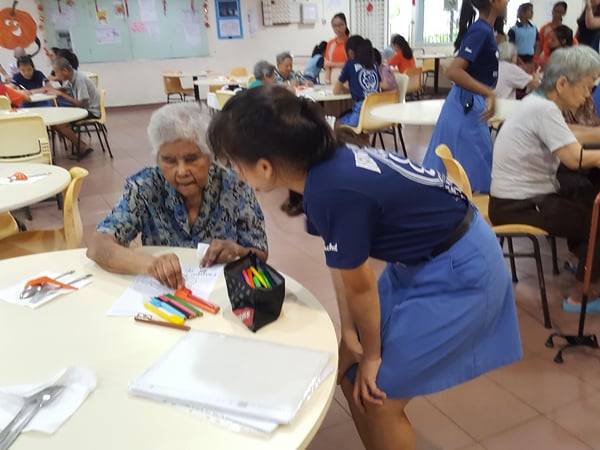
“Singapore has transitioned from a young population with high fertility and mortality rates in the 1980s to an aging population characterized by low mortality and below-replacement level fertility rates. This demographic shift has also largely been fuelled by the aging post-war baby boomer generation. In Singapore, the proportion of elderly aged 60 years and older is expected to rise from 16 percent of the population in 2014 to over 30 percent of the population by 2040. Within this cohort, the group aged 80+ is anticipated to increase more than 4 times, from 121,800 in 2014 to 567,500 in 2040.” *
Many in the news media has referred to this as the “silver tsunami” in Singapore. Singapore now faces a challenging demographic future. In the 1970s thru 1980s, Singapore was a young nation powered by the post-war baby boom, a young population and high fertility rates. Fast forward to now – we have the reverse -- we now have a rapidly aging population and declining fertility rate resulting in a likely 4-times increase in the 80+-years-old by 2040 from 2014.
Most traditional demography relies on the young to take care of the old and Singapore is no different. But by 2040, there will not be enough young persons below 60-years to take care of the increasing aging population and continue to sustain a vibrant economy. A Singapore study have begun to look at classifying the aging segment into (1) young-old aged between 60-79, and (2) old-old aged 80+. To ensure that we have enough resources to take care of an aging population means that we must rely on the young-old to take care more of the old-old. Most families today are already having someone in the 60’s or even 70’s as caregivers to their aged parents in the 80-s or 90’s. In the next decade, this scenario will become more prevalent and would begin to normalize the role of the young-old as caregivers for the old-old.
There is a silver lining to all of this. The young-old is different from the old-old in terms of education and savings. Greater savings means they have more resources and options, and will rely less on the government. Education makes the young-old more technologically savvy and is able to navigate and use technology to help them in their caregiving roles. Unlike the old-old, the young-old are most likely smartphone users and are internet savvy, giving them greater access to medical and caregiving knowledge. Efficiency is important here to reduce the demand for institutional care such as community hospitals and nursing homes, whose resources are often stretched to begin with.
The idea of the young-old playing a much bigger role in Singapore is not new as in other developed countries. In many ways, Singapore is more fortunate because the post-war baby boomers have more savings and better education compared to our ASEAN neighbours. A lot more study and planning needs to be done in this space.
*Projection of Young-Old and Old-Old with Functional Disability: Does Accounting for the Changing Educational Composition of the Elderly Population Make a Difference? John P. Ansah , Rahul Malhotra, Nicola Lew, Chi-Tsun Chiu, Angelique Chan, Steffen Bayer, David B. Matchar


